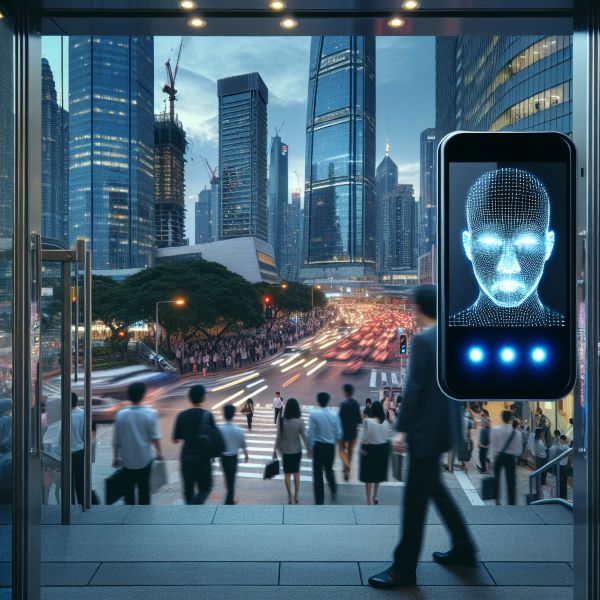Unmasking the Technology: How Do Facial Recognition Systems Work?
I. Introduction
Hello. Have you ever wondered how your phone can be unlocked just by looking at your face? Or how does Facebook instantly know to tag your friends in the photos you upload? That's the magic of facial recognition technology, and it's everywhere today. Dive into the fascinating world of this technology and uncover its secrets.
II. Fundamentals of facial recognition

A. What is facial recognition?
Simply put, facial recognition is a biometric technology that recognizes human faces. It uses mathematical algorithms to map facial features from photos and videos and compares this information to a database of known faces.
B. A quick stroll down memory lane
Facial recognition has come a long way since its inception. I remember reading about early systems developed in the 1960s that required administrators to manually find features such as eyes and ears in photos. Fast forward to today, and systems exist that can identify individuals in crowded spaces in real time.
C. Common uses of facial recognition
You'd be surprised how common facial recognition is. It's used on smartphones, social media platforms, and even in airports and shopping malls. I'm sure you've used it at least once today without even realizing it.
III. The technology behind facial recognition
A. Simplification of technical terminology
Facial recognition may sound complicated with a lot of technical terms, but don't worry, we will explain it in detail. Biometrics is a technology that measures and analyzes characteristics of the human body. Artificial intelligence (AI) and machine learning (ML) are the brains behind operations, helping systems learn and improve over time.
B. Different types of facial recognition systems
There are many different types of facial recognition systems, including 2D, 3D, and even thermal. 2D systems are the most common and are used in most smartphones. 3D systems are more advanced and can recognize faces even in poor lighting conditions. Thermal face recognition, on the other hand, uses the thermal patterns of the face to identify it.
IV. Facial recognition process
A. How does it work?
Imagine meeting a friend you haven't seen in years. How do you recognize them? You look for familiar features, right? The same principle applies to facial recognition technology.
1. Face Detection: The system first detects faces in images or videos. It's like finding a friend in a crowd.
2. Facial Capture: Next, the system captures and analyzes your face. It's like trying to get a closer look at your friend.
3. Data transformation: Next, the system transforms the facial data into mathematical formulas. This is like remembering the characteristics of your friends.
4. Face matching: Finally, the system compares the expression to a database of known faces. It's like confirming that the person you're seeing is really your friend.
V. Accuracy and efficiency of facial recognition
A. How accurate is it?
Facial recognition technology is highly accurate, with some systems boasting over 99% accuracy. But like any technology, it's not perfect. Factors such as lighting, camera quality, and even face angle can affect accuracy.
B. Improving accuracy with AI and ML
AI and ML play a key role in improving the accuracy of facial recognition. These allow the system to learn from mistakes and improve over time. It's just like we get better at recognizing faces as we meet more people.
VI. The future of facial recognition
A. What's next?
The future of facial recognition is exciting. It is already being used in areas such as law enforcement and retail. Who knows, maybe one day you'll be able to pay for your coffee just by smiling at the cash register.
VII. Conclusion
And it was done! Let's take a peek behind the curtain of facial recognition technology. It's really interesting to see how far we've come and I can't wait to see where we're headed. So next time your phone is unlocked, you'll know exactly what's going on just by looking at you.
Ⅷ. References
All information and data provided in this article is based on my personal experience and extensive research on facial recognition technology. If you want to learn more, we recommend checking out the work of researchers in this field. Trust me, it's worth a read.
Remember that technology is only as complex as we can understand it. So keep exploring and keep learning. And most importantly, enjoy the process.